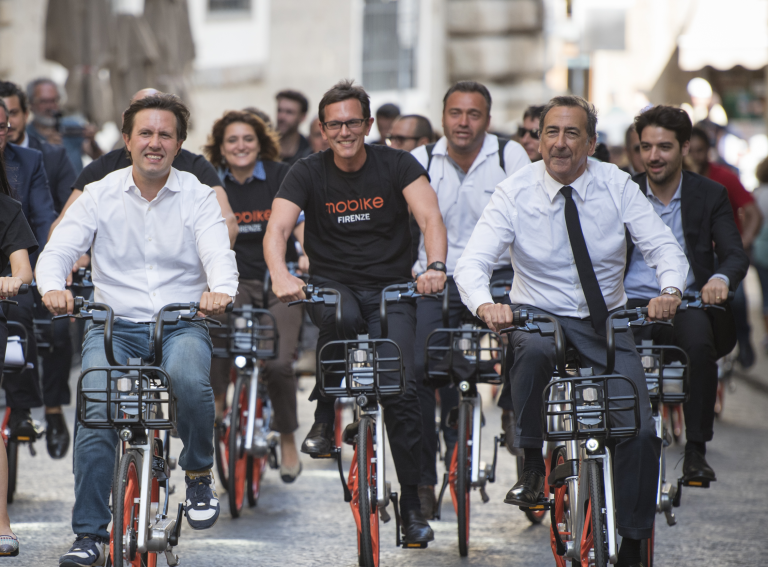In a world where rising gas prices and environmental concerns are on the minds of many, a new report from the American Public Transportation Association (APTA) reveals an eye-opening truth: you can save over $13,000 annually in the US by making one simple choice – leaving your car behind and embracing the world of alternative public transportation options.
The Cost Savings of Public Transit
APTA’s new Transit Savings Report reveals that since 2019, the average cost of purchasing a new car has increased by 30%.
The cost of purchasing used cars has increased 40%.
In 2023, gasoline prices in the US have increased 25% because of restricted oil supply, China’s economic reopening, and the war in Ukraine. At the same time, according to APTA’s Fare Database, monthly public transit fare prices have not increased since 2020.
Topping the list of cities with the highest potential savings is San Francisco, where residents can expect monthly savings of more than $1,400 or nearly $17,000 yearly by choosing public transportation.
Source: APTA
For many, it is no surprise that San Francisco leads the list because of its reputation as an innovative city in terms of public transit. Beyond traditional rail and buses, the city boasts a variety of public transportation modes, including shared scooters, electric bikes, autonomous vehicles, ferries and cable cars.
Public-Private Solutions
Today, San Francisco is set to host Micromobility America, an event that brings together the industry’s top global leaders and experts in the field of micromobility. They will be sharing best practices and strategies to promote and expand the use of small electric vehicles to complement public transportation systems.
Sean Flood, Co-Founder of Today and a panellist at this week’s Micromobility America event, believes public-private partnerships are key to making a significant impact. “Residents need reliability, which is what overpriced personal auto ownership has provided,” said Flood. “If operators, OEMs and tech providers can partner with municipalities, we can change how we interact with their communities.”
At Micromobility America, the focus of several panels will be how companies can provide communities with convenient, sustainable, and efficient micromobility options that will help residents walk away from their gas-powered cars and instead choose an electric bike, scooter or NEV for their next ride downtown or to dinner.
“Inflation is severely impacting consumers globally. This is particularly pronounced with the growing costs of purchasing and owning a car,” said Russell Murphy, Global Communications Director for Lime. “There’s never been a better time for city residents to go car-free and instead opt for a mix of public transit and micromobility. In cities like San Francisco, the savings from not needing to pay car loans, parking, maintenance, tolls, and more can make life more affordable, all while positively impacting the city and the environment.”
Half a Billion Trips Since 2010
According to a recent National Association of City Transportation Officials (NACTO) analysis, bike share, e-scooter, and other micromobility systems have become a crucial part of urban transportation networks across the U.S., with at least half a billion trips on micromobility systems in the region since 2010.
SOURCE: NACTO
“Shared bikes and scooters are embedded within the day-to-day lives of millions of people,” said Corinne Kisner, Executive Director of NACTO. “Well-designed micromobility programmes mean safer, more sustainable and resilient cities. By redesigning streets, lowering speeds, and prioritising bikeway projects, local leaders can ensure that the bike and scooter boom continues to gain momentum, connecting people to the opportunities in their cities.”
In the past few years, micromobility solutions have gained substantial popularity and attracted a broad audience of urban commuters. Their appeal lies in the convenience they offer and the environmentally friendly travel options they present. Additionally, high gas prices and a sluggish economy have played a role in the growing adoption of shared mobility services.
Flood added, “Freeing consumers from their dependency on vehicles is both a financial saving, as stated in the APTA report, but also has meaningful environmental and physical health benefits that can’t be ignored. The key to moving more people to mass transit is to connect the last mile loop by placing a variety of shared mobility/bike library devices adjacent to mass transit stations.”
In more than 100 cities across the US, residents and visitors are taking advantage of shared bike and scooter programmes, which encourage riders to leave their cars parked and choose more affordable, sustainable transportation options.
Source: NACTO
Consumers are increasingly looking for shared, more sustainable ways of getting around. The McKinsey Mobility Consumer Pulse Survey regularly polls users about their perceptions and preferences related to mobility options. Their most recent survey revealed that 30% of respondents said they would use private vehicles less than they do now, compared with 20% who said they would use them more.
Additionally, over a quarter of respondents living in urban areas say they are thinking of getting rid of their private vehicles entirely, replacing them with other means of transport in the future.
More than 60% of global mobility users in the McKinsey survey are open to using a shared autonomous shuttle service as part of their mobility mix in the future. Shared autonomous shuttles could potentially get existing vehicles off the road more often, as 42% of respondents willing to use the new mode of transport indicate that it will replace their private-car trips.
San Francisco is one of a growing number of cities worldwide that are testing the safety and potential of autonomous vehicles in the hopes of transforming public transportation. This fall, the San Francisco County Transportation Authority launched a complimentary shuttle service known as the “Loop”.
The Loop is one of California’s first demonstrations of AV shuttles operating entirely on public roads and provides free rides using fully electric autonomous shuttles with an attendant on-board at all times. The shuttle picks up passengers along a fixed route that features seven stops and can accommodate wheelchair users.
At the launch of the new service, Treasure Island Mobility Management Agency Chair, and District 6 Supervisor Matt Dorsey commented, “This is a community with unique transportation needs and challenges, and this innovative pilot will give us insight into how autonomous vehicles can enhance neighbourhood access and promote community-wide learning.”
Car is King
According to APTA, the average household spends 16 cents of every dollar on transportation, and 93% of this goes to buying, maintaining, and operating cars, the largest expenditure after housing.
Despite the increasing variety of transportation options, cars continue to dominate American roads. According to a joint forecast from J.D. Power and GlobalData, total new-vehicle sales in the U.S. for September 2023, including retail and non-retail transactions, were projected to reach 1,309,900 units, a 13.8% increase from September 2022.
Even though cars are still a favourite among consumers, policymakers remain optimistic that Americans will recognise the merits of alternative transportation choices.
“As the rising cost of living continues to impact U.S. households, public transportation offers an economical and climate-friendly alternative to reduce daily expenses,” said APTA President and CEO Paul P. Skoutelas. “By choosing to ride public transit, individuals can significantly cut down on their monthly transportation expenses. Whether it’s commuting to work, running errands, or keeping appointments, public transit is a practical and budget-friendly choice.”





